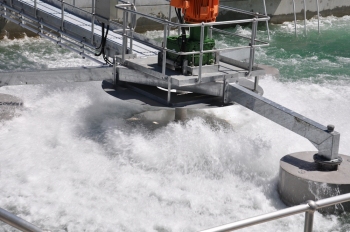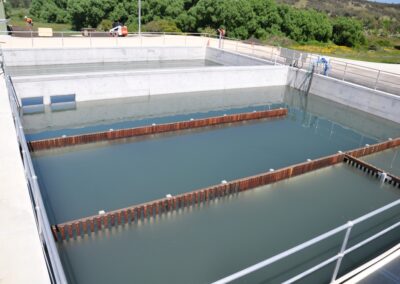Lithgow Sewage Treatment Plant
Lithgow Sewage Treatment Plant – Securing Our Water Future
| Phrase | Description |
|---|---|
| Activated Sludge | Aerated sewage containing microorganisms |
| Aeration | To expose to the action of air |
| Algal Bloom | An excessive growth of algae on or near the surface of water, occurring naturally or as a result of an excess of nutrients from organic pollution |
| Alum | Double aluminium sulfate used to precipitate phosphates |
| Ammonia Nitrogen | Ammonium nitrogen (NH4-N) is a primary indicator of water quality. Most of the ammonia in sewage comes from urea |
| Anoxic | Areas of water that are depleted of dissolved oxygen |
| Bacteria | Small living things (microorganisms) consisting of a single cell |
| Belt Filter Press | Sludge dewatering device that applies mechanical pressure to a chemically conditioned slurry, which is sandwiched between two porous tensioned belts, by passing those belts through a serpentine of decreasing diameter rolls |
| Biomass | The mass of living organisms in a particular environment |
| Chlorine | An element toxic to microorganisms and used for disinfection |
| Cryptosporidium | A water-borne protozoan parasite that contaminates drinking water supplies, causing intestinal infections |
| Decant | To pour off leaving sediment behind |
| Dechlorination | Removing residual chlorine |
| Effluent | Liquid waste discharged from a sewage system |
| Giardia | A single-celled protozoan, some forms of which live as parasites in the gut of humans and other vertebrates, causing an infection giardiasis |
| IDEA | Intermittent Decanted Extended Aeration |
| Influent | Something flowing in |
| Nutrients | Food substance needed for living and growing |
| Organic | Relating to, derived from, or characteristic of living things |
| Oxidised Nitrogen | The type of nitrogen (nitrite and nitrate) that is immediately available to plants in brine or freshwater |
| Reactor | A vessel or other equipment in which an industrial reaction takes place |
| Sewage | Liquid waste matter for disposal |
| Sewerage | A system of drainage by sewers |
| Sludge | Settled solids from sewage |
| Ultraviolet Light | Ultraviolet light is beyond the normal range of colours that humans can see. Too much ultraviolet light can kill microorganisms. Often referred to as UV |


